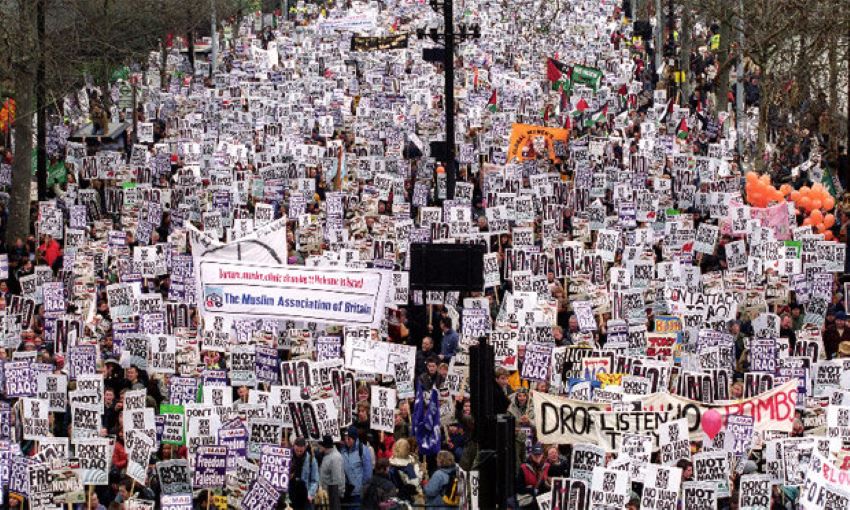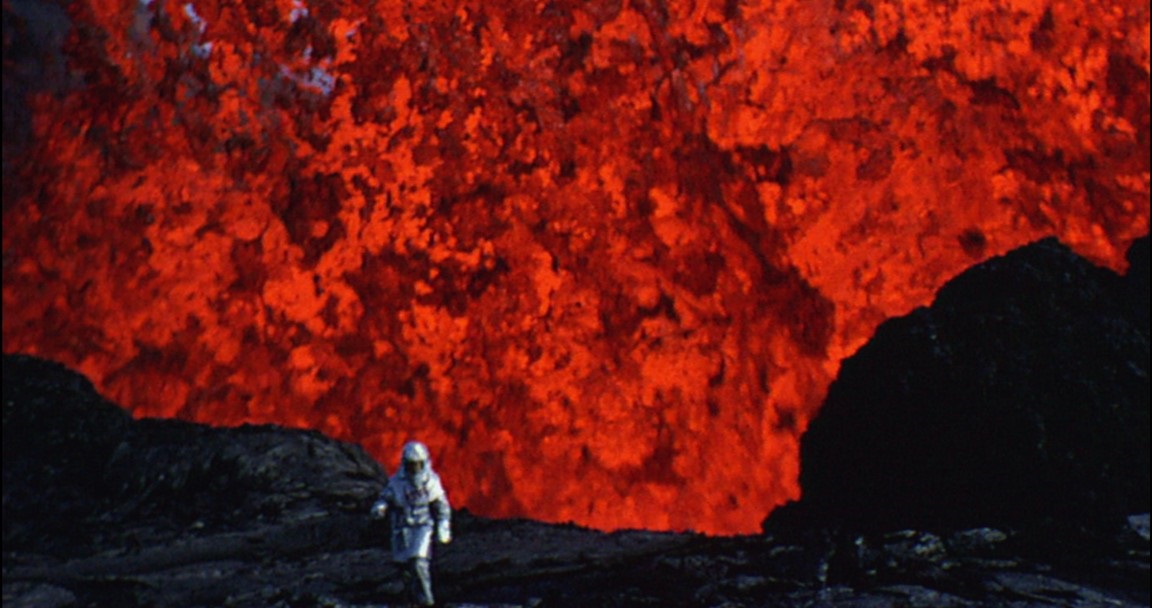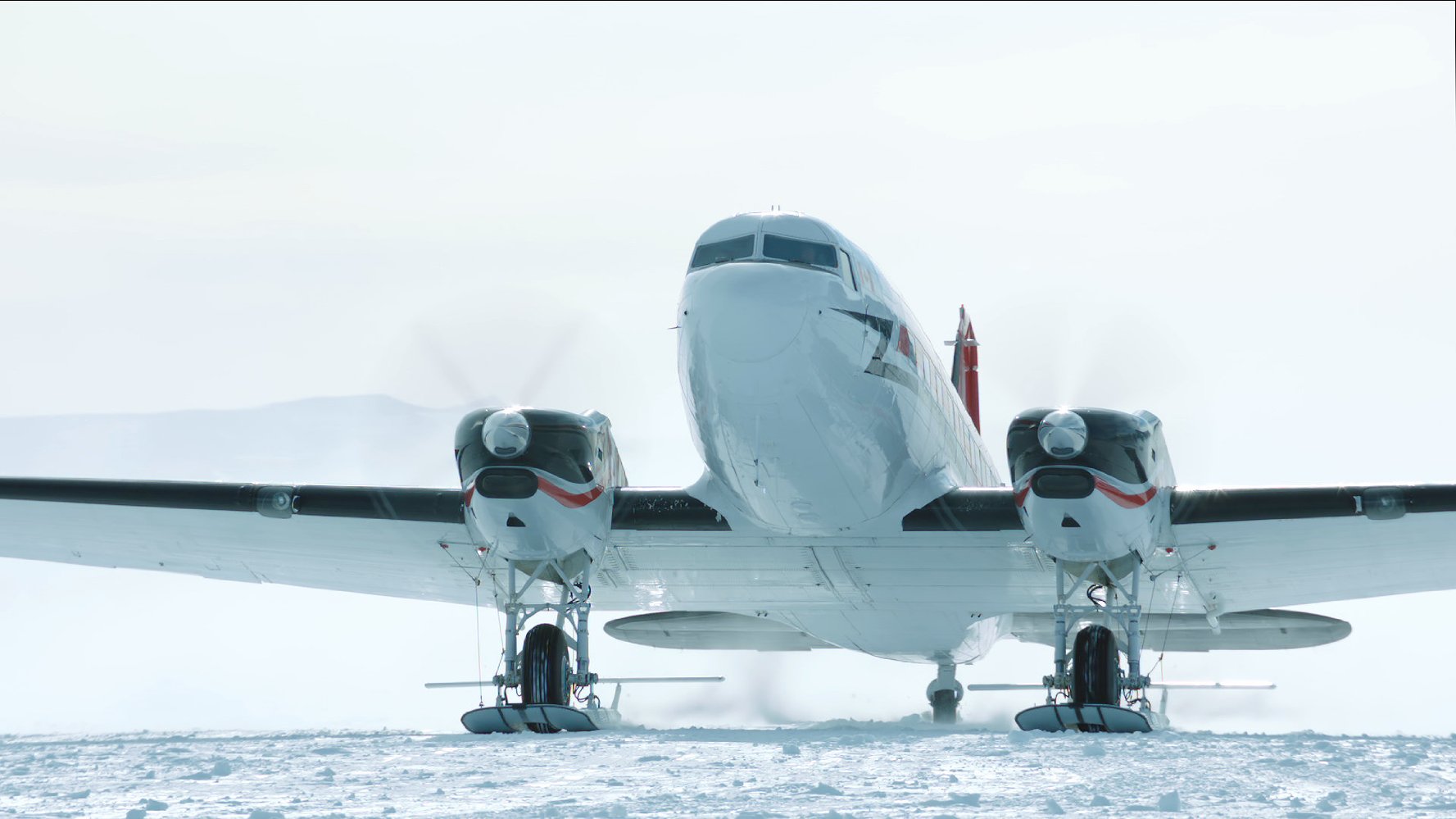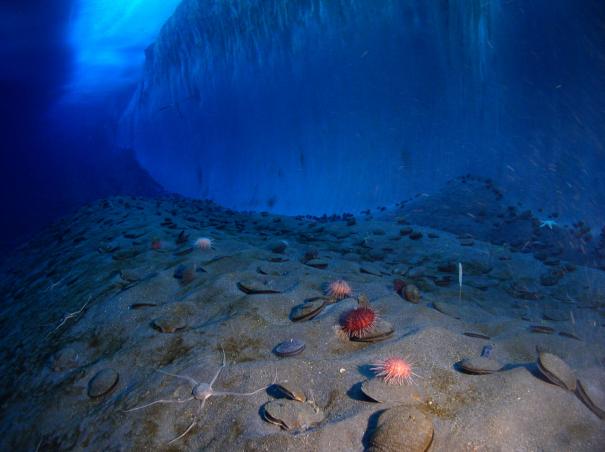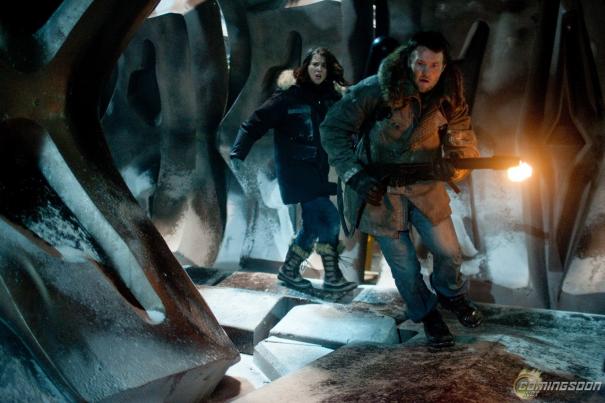
(2021) Sci-Fi Action (Warner Brothers) Alexander Skarsgård, Millie Bobby Brown, Rebecca Hall, Brian Tyree Henry, Shun Oguri, Elza Gonzales, Julian Dennison, Lance Reddick, Kyle Chandler, Demián Bichir, Kaylee Hottle, Hakeem Kae-Kazim, Ronny Chieng, John Pirruccello, Chris Chalk, Conlan Casal, Brad McMurray, Benjamin Rigby, Nick Turello, Daniel Nelson, Priscilla Doueihy. Directed by Adam Wingard
In 2021, after everything we’ve been through, after everything we’ve suffered, I think that what we need the most now more than platitudes and pep talks is just a good old-fashioned slugfest between two giant iconic monsters. Who’s with me? A whole lot of you, as it turns out.
Podcaster Bernie Hayes (Henry) is investigating Apex Cybernetics and their shifty CEO Walter Simmons (Bichir), thinking that there’s some vast world-threatening conspiracy going on; when you’re right, you’re right. Plucky Madison Russell (Brown), whose mom was a scientist turned eco-terrorist who died as a result of a battle of Titans (as did her baby brother) and whose Dad (Chandler) is a scientist working for the Monarch Project, a shadowy organization involved with both Godzilla and Kong, thinks Bernie is on the right track and decides to seek him out, aided by her nerdy friend Josh (Denison).
Skull Island was destroyed in a storm, but Kong was rescued by Monarch and put into a dome that is much like the Island, minus the deadly giant creatures. Kong is being studied by biologist Dr. Ilene Andrews (Hall) whose adopted daughter Jia (Hottle) – the last survivor of the tribe that lived on Skull Island and deaf – can communicate with the giant ape via sign language.
Simmons has hired geologist Nathan Lind (Skarsgård) to lead an expedition to the Hollow Earth, the inner part of our planet that his brother had died trying to reach. However, Nathan will be equipped with a modern flying vehicle that can handle the pressure of the gravitational forces. Simmons believes Kong can guide him through to the center, so Dr. Andrews and Jia will be going with them, as will be his daughter Maya (Gonzalez) who has ulterior motives. However, they are interrupted by an inexplicable attack on Apex’s Pensacola facility, but why would Godzilla, who up to now has been a protector of mankind, suddenly turn against them? And how will he react to the presence of Kong, a King in his own right? I think the title of the film gives that one away.
And indeed, if you are looking eagerly for that titular battle, you will not be disappointed. Wingard and company pull off the larger than life spectacle amidst the neon skyscrapers of Hong Kong, in the primitive landscape of Hollow Earth and in the cool futuristic corridors of Apex, whose name should be a hint as to what they are up to – and it’s no spoiler to inform you that they are indeed, up to something.
Reading the plot summation will probably make your head explode if you think about it too much, but then again, if you take this too seriously you’ve probably spent too much of the pandemic reading about politics. It’s daffy and lightweight and essentially an excuse for Kong or Godzilla (or both) to battle lizards, monkeys, insects, robots, dragons, aliens, dinosaurs, or whatever else the evil geniuses at Legendary can come up with. It’s all in good fun.
Henry actually proves to be the most memorable performer here, which is surprising since he’s more or less comic relief – think the Woody Harrelson role in 2012. The heroic characters- Hall, Skarsgård, Brown – do adequate jobs, but the movie really isn’t about them. And it really isn’t about the comic relief, either, when you get right down to it. No, it’s about giant things beating up on other giant things while people scream and run and buildings collapse. Just good clean fun, in other words.
The pandemic has been kind of a petri dish for important, thought-provoking movies because those sorts, let’s face it, don’t suffer much from being seen at home, whereas the big dumb mindless eye candy movies like this one benefit more from having theaters. Now that we’re starting to see theaters reopening all around the globe, the time is right for the movies that the studios have been holding onto until the right time. Well, the time is now and we shall soon be seeing a parade of big, dumb, mindless eye candy films that we’ve been missing other than in reruns on our streaming services. And I’m glad they’re back. I didn’t know how much I missed them until now. And yes, critics have been embracing this movie with uncharacteristic glee which should be taken with a grain of salt; most critics would have excoriated this film had it come out in 2019, and certainly come 2022 they will be back to eviscerating films like this while praising the grim, thought-provoking movies that in the midst of a pandemic seem to be almost anti-climactic. So enjoy the Bizarro-world reversal while it lasts, kiddies. And try to see this movie in a theater if you can; these kinds of movies really are better-served in that environment. But, if you haven’t gotten vaccinated and you have HBO Max and you have a reasonably good home entertainment system, you should be all set in that regard as well.
REASONS TO SEE: Eye candy as far as the eye can see.
REASONS TO AVOID: Character development? Pshaw!
FAMILY VALUES: There is all sorts of creature violence and destruction, some brief profanity and a few terrifying images.
TRIVIAL PURSUIT: The film earned $122 million over its opening weekend, the largest opening of a film since the pandemic began.
BEYOND THE THEATERS: HBO Max (until April 30)
CRITICAL MASS: As of 4/5/21: Rotten Tomatoes: 76% positive reviews; Metacritic: 60/100.
COMPARISON SHOPPING: Godzilla: King of Monsters
FINAL RATING: 6.5/10
NEXT: The Believer

